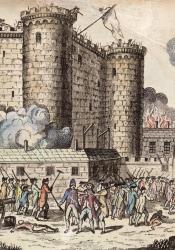The Bastille
The Bastille Saint-Antoine, commonly referred to as the Bastille, was a fortress in eastern Paris. Since the sixteenth century, the building was in use as a political prison; the storming of the Bastille on 14 July 1789 was a key event in the escalation of the French Revolution. The building was destroyed during the Revolution; on its site is now the Place de la Bastille. The Bastille has featured in literary works by Alexandre Dumas (who used the “Man in the Iron Mask” legend in the d’Artagnan Romances) and Charles Dickens (A Tale of Two Cities).
Coordinates
Latitude: 48.852987357889
Longitude: 2.368858871052
Longitude: 2.368858871052

